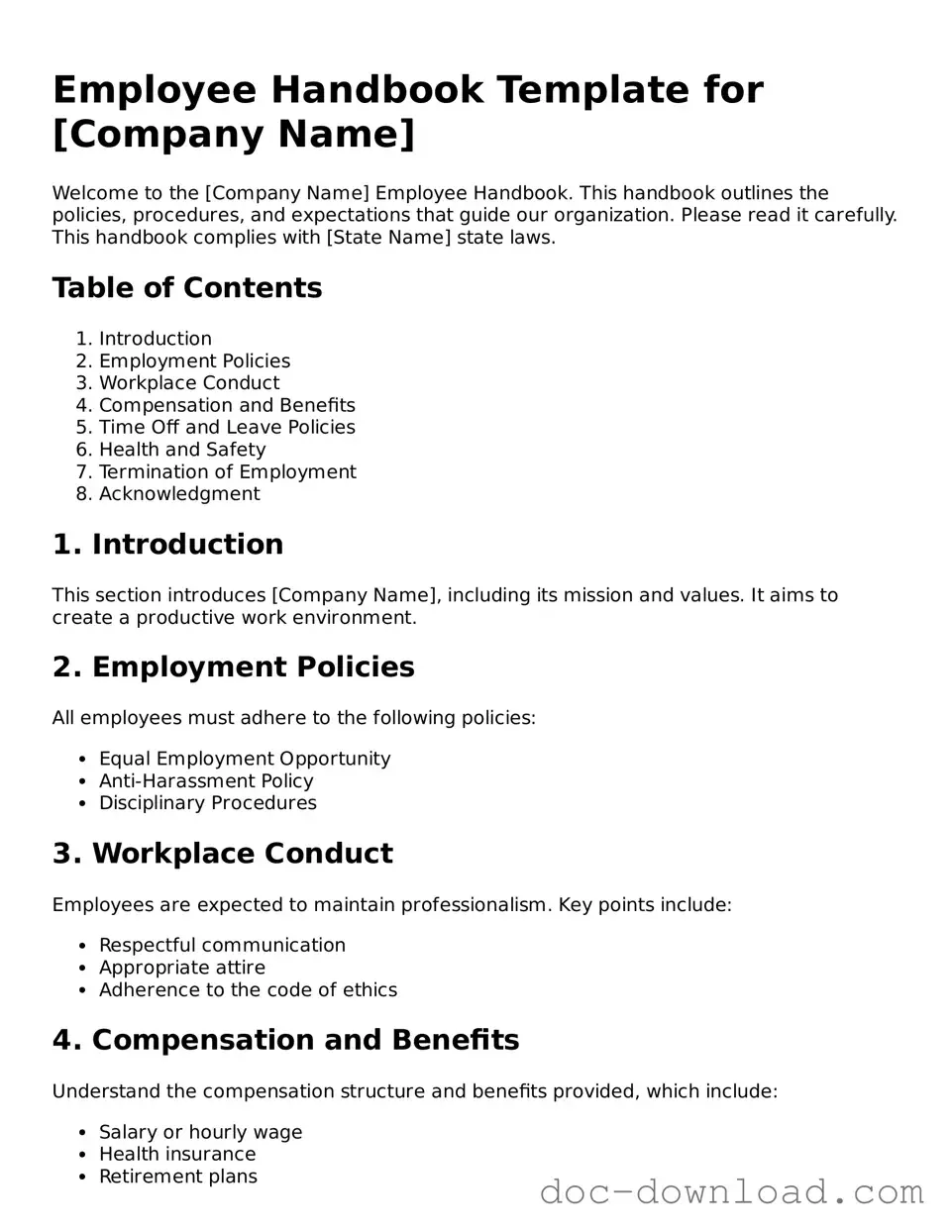The Employee Handbook is often compared to a company policy manual. Both documents serve as a guide for employees, outlining the expectations and standards of behavior within the workplace. A policy manual typically focuses on specific rules and regulations, while the Employee Handbook provides a broader overview, including company culture, benefits, and procedures. Together, they create a comprehensive resource for employees to understand their rights and responsibilities.
For those engaging in transactions, utilizing a reliable Alabama bill of sale form is critical. This document not only secures the transfer of property but also ensures that both parties are protected. To learn more about its significance, you can refer to this comprehensive Alabama bill of sale form.
Another similar document is the onboarding guide. This document is designed to help new employees acclimate to their roles and the company environment. While the Employee Handbook offers a detailed overview of company policies, the onboarding guide usually contains practical information that assists in the transition, such as introductions to team members, training schedules, and initial tasks. Both documents aim to foster a smooth integration into the company.
The employee contract, or employment agreement, is also closely related to the Employee Handbook. This document outlines the specific terms of employment, including job responsibilities, compensation, and benefits. While the Employee Handbook provides general policies applicable to all employees, the contract is tailored to the individual. Together, they ensure that employees are aware of their rights and obligations from the start of their employment.
Performance review guidelines are another document that shares similarities with the Employee Handbook. These guidelines detail the criteria and process for evaluating employee performance. While the Handbook sets the tone for workplace expectations and behavior, the performance review guidelines provide a framework for assessing how well employees meet those expectations. Both documents play a crucial role in employee development and organizational success.
Code of conduct documents are also akin to the Employee Handbook. A code of conduct outlines the ethical standards and behavioral expectations for employees. It complements the Handbook by providing specific examples of acceptable and unacceptable behavior in the workplace. Together, they help to create a positive work environment and promote a culture of integrity and respect.
Health and safety policies are another important document that aligns with the Employee Handbook. These policies outline the procedures and protocols in place to ensure a safe working environment. While the Handbook provides an overview of the company’s approach to employee well-being, health and safety policies offer detailed guidelines on emergency procedures, reporting incidents, and maintaining a safe workplace. Both documents are essential for protecting employees and promoting a culture of safety.
Employee benefits guides are also similar in nature to the Employee Handbook. These guides provide detailed information about the benefits offered by the company, such as health insurance, retirement plans, and paid time off. While the Handbook may mention these benefits, the benefits guide goes into greater detail, helping employees understand their options and how to access them. Together, they ensure that employees are well-informed about the support available to them.
Finally, training manuals can be compared to the Employee Handbook. These manuals focus on the specific skills and knowledge employees need to perform their jobs effectively. While the Handbook provides an overview of company policies and culture, training manuals offer step-by-step instructions and resources for job-specific tasks. Both documents are integral to employee success and contribute to a well-trained workforce.
